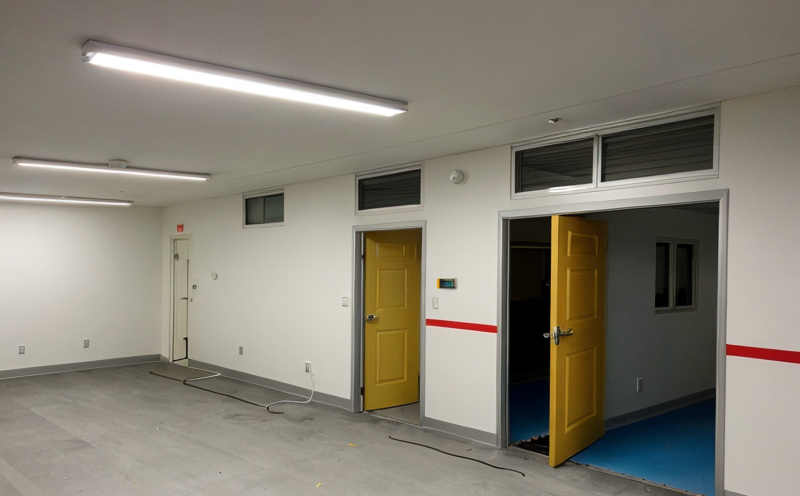EN 50294 Automotive Emergency Lighting Testing of Interior Lamps
The European standard EN 50294 specifies the testing procedures and requirements for automotive emergency lighting systems, particularly interior lamps. This testing is critical to ensure that these safety-critical components function reliably under adverse conditions in vehicles. The test encompasses various aspects such as luminous intensity, visual field, color rendering index (CRI), electrical resistance, and mechanical durability.
Interior lamps are a key component of automotive emergency lighting systems designed to provide visibility during emergencies when the main vehicle lighting fails or is not sufficient. These lamps must meet stringent performance criteria to ensure they can be activated quickly and effectively in critical situations. The standard aims at enhancing road safety by mandating rigorous testing protocols that simulate real-world scenarios.
The testing process involves multiple stages, starting with the preparation of specimens according to specified dimensions and materials. Electrical resistance checks are performed first to ensure that there is no significant variation from the manufacturer's specifications. This step helps in identifying any inherent defects within the components early on before proceeding further into more complex tests.
Luminous intensity measurements follow, which involve determining how much light the lamp emits per unit area at a specific distance. Visual field testing assesses whether the light distribution pattern meets the required specifications for visibility and coverage in different positions relative to the vehicle interior layout. Color rendering indices are evaluated next because accurate color representation is crucial for proper identification of objects or signs under emergency conditions.
Finally, mechanical durability tests simulate potential stresses that might be encountered during use over time, such as vibrations, shocks, or impacts from external sources. By subjecting the lamp to these stressors repeatedly, engineers can assess its resilience against damage and maintain operational integrity.
Applied Standards
| Standard Name | Description |
|---|---|
| EN 50294 | This European standard specifies the testing procedures and requirements for automotive emergency lighting systems, including interior lamps. It ensures compliance with safety regulations regarding luminous intensity, visual field, color rendering index (CRI), electrical resistance, and mechanical durability. |
The application of this standard is mandatory for manufacturers producing or importing automotive emergency lighting systems into the European Union. Compliance ensures that all products meet stringent safety standards, thereby enhancing road safety and reducing accidents caused by insufficient visibility during emergencies.
Industry Applications
- Automotive manufacturers
- Aftermarket parts suppliers
- Testing laboratories specializing in automotive components
The primary application of EN 50294 lies within the automotive industry, particularly focusing on OEMs (Original Equipment Manufacturers) and suppliers who need to ensure their emergency lighting systems comply with international safety standards. Compliance is essential for market access into Europe as well as meeting insurance requirements.
Testing laboratories play a crucial role in validating that products meet these stringent criteria through thorough evaluation processes involving multiple stages of testing as outlined in the standard.
Why Choose This Test
The EN 50294 Automotive Emergency Lighting Testing is chosen by quality managers, compliance officers, R&D engineers, and procurement personnel for several reasons:
- To ensure strict adherence to international safety regulations.
- To enhance product reliability and performance under adverse conditions.
- To facilitate easier market access into the European Union.
- To meet insurance requirements, potentially reducing premium costs.
- To improve brand reputation by demonstrating commitment to safety standards.





